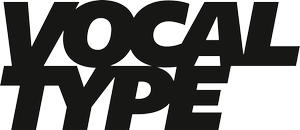Becoming
Vocal
First off, allow me to introduce myself. My name is Tré Seals, founder of Vocal Type. The story of Vocal begins in June of 2016. I was crafting another identity (my specialty), and per usual, searching for inspiration online (usually my last resort after checking out my library), and I just became really bored. Everything I saw, no matter how beautiful, it all just looked the same. You could argue that it’s because of our obsession with grids and perfection, but the truth is there was no culture, no character— only monotony and stereotypes (don’t get me wrong, I know stereotypes are more of a societal problem, but follow me here). While design is my passion, I started wondering if I had picked the wrong career.
Then one day, not soon after, I came across a record of the demographics of the graphic design industry, and for the life of me I can’t remember how (how I found it or why I went looking for it), but I did. And when I discovered that only 3–3.5% of all practicing designers in America are Black, and ±85% White (depending on the source), a lot of things started making sense. And I understood why everything looked the same.
When a singular perspective dominates an industry, regardless of technological advancements, there can (and has been) only one way of thinking, teaching, and creating. This lack of diversity in terms of race, ethnicity, and gender has led to a lack of diversity in thought, systems (like education), ideas, and, most importantly, creations.
Maybe a week after these realizations occurred, I received an issue of PRINT magazine in the mail, with an article titled “Black Designers: Still Missing in Action,” by Dr. Cheryl D. Holmes-Miller. The premise of the article is, partially, the lack of diversity in the design industry, but the message is a call to action for the next generation of Black designers to step up. So I did.
I decided to find a way to increase diversity and empathy in the design industry. I knew I couldn’t just change the demographics or the education system. So I tried to figure out a way to introduce a non-stereotypical piece of minority culture into the design itself, starting with the basis of any good design — typography.


